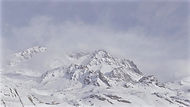Winter safety
- Carol Godwin
- Jan 14, 2021
- 4 min read
Updated: May 29, 2021
Oops! Be prepared for winter outings.
It happens. You are riding or hiking along, happily and with complete confidence and then bam!, suddenly you are face-first in the dirt wondering what happened. It happens to all of us and most of the time you look around to see who saw you fall, get up and keep on going. But what happens when you fall or have a crash that is a little more serious?
Recently, a friend of ours was out cycling and had a significant crash. After getting his orientation back, he realized that he was not going to be able to get out alone before nightfall and called for help. This decision probably saved his life, because compounded with the injury was the impending White Mountain winter night with expected temperatures in the low 20’s, which could have easily lead to hypothermia.
What can you do to help mitigate the dangers of winter outdoor activity? The primary mantra is be prepared. Be prepared to be able to communicate with friends or loved ones in case of an emergency. Be prepared to stay outside much longer than predicted. Nobody can be prepared for everything, but here are some suggestions to help you be more prepared on your next winter cycling or hiking adventure.
Communication: Our friend was prepared with the ability to call for help and the ability to send precise location details to friends. Communication is of utmost importance. We live in a world where technology is sometimes overwhelming and there is a desire to “turn it off” and go out into nature without distractions, but you need to at least carry a fully charged cell phone to be able to call for help. Our friend was using the Strava app to track his progress and was able to end his ride where he was and post his exact location so he could be found. A tracking app like Strava is useful because while it tracks your exact path, it also shows the surrounding area on both satellite and topo maps so that rescuers can plot the fastest route to your location. Garmin units have crash locator beacons that will call loved ones with your precise coordinates and there are several cycling helmets that do the same thing. Be able to be in contact with somebody when you go out. Always carry an emergency whistle to be able to signal searchers -if you break a rib, yelling out may not be the most comfortable option! There is no shame in a crash or fall- call for help and your friends will do what is needed to get you out. The White Mountain cycling community is awesome, has members from every occupation and can get it done.
Winter preparation: How else can you be prepared for winter riding or hiking? You need to dress in layers and carry a spare jacket in case you need to be immobile for a while (maybe it’s not you who needs help and you need to stop and give aide to someone else). The most important concept to remember for winter is layers. Often you feel that you will be plenty warm enough since you are exerting yourself physically, but what happens if you crash and can’t move, crash and are in shock, or crash just prior to nightfall? Carry an extra layer, wear a base layer to absorb sweat and keep you dry, (T-shirts absorb sweat and hold it next to your body- cooling you down rapidly), wear a thermal jersey and have a wind-proof shell to reduce any windchill. Unless it will be wet out, skip the rain jacket as it can trap moisture and cause you to chill quickly. Wear warm socks, wool is best and will keep feet warm even when wet. Winter tights or leg warmers reduce exposed skin surface area, keep your legs warm and reduce heat loss. Carry or wear a scarf, skull cap or headband under your helmet to keep your head and ears warm. If you crash, and cannot keep on moving, put on your extra layers and keep your helmet on to conserve heat.
Even if you plan to be back by dark, on these short winter days a light (and a backup light) is a must both for being able to make your way back if possible and for signaling rescuers coming for you.
If you do have an accident and cannot get up and keep going, find a protected area near the trail to wait in. It’s advisable to carry an emergency blanket in your pack to both keep your body heat in and to direct warmth if you need to build a fire. Speaking of fire, it is a great idea to carry a small fire starting kit including wind-proof matches and some dry tinder. Carry some spare high-energy food at all times and of course water. Even if you don’t normally ride or hike with a pack, winter is the time to get one and keep it stocked for the just-in-case.
Here’s a short list of things to carry in your pack: High energy food like sport nutrition bars and gus, high-fat foods like nuts and cheese, emergency blanket, fire starter, lights, spare winter gloves if you are starting out with regular cycling gloves, hat or skull cap, cell phone charger, chemical heat packs, small first aid kit including blood stopper and wrap, spare softshell jacket, emergency whistle, knife and your normal cycling tools and flat-kit.
Winter riding and hiking is fun and invigorating, but does carry additional risks. Be prepared, watch the weather reports and expected temperatures, venture with others if possible and get out there safely!




















Comments